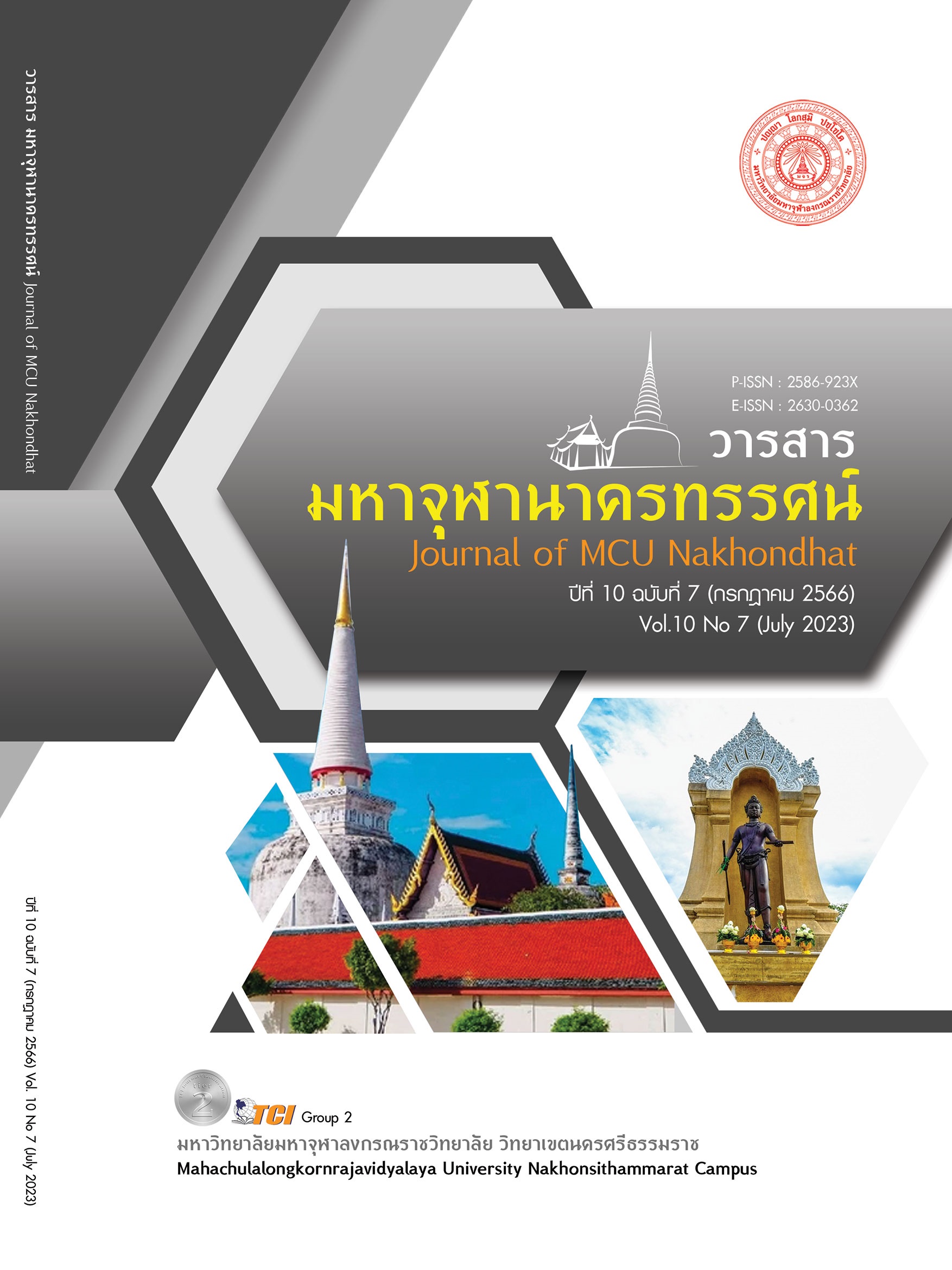THE PROCESS OF CREATING VALUE AND INNOVATION FOR THE ELDERLY COMMUNITY THROUGH WEAVING COMMUNITY ENTERPRISES
Main Article Content
Abstract
The objectives of this research were 1) to study the current conditions. Problems of the elderly in the community of Na Siao sub-district, Muang district, Chaiyaphum Province. 2) to study the process of creating value and innovation in the elderly community through the silk weaving community enterprise. This participatory action research was divided into 2 phases, totaling 10 steps. The target group was 30 elderly people. The research tools were questionnaires, interviews and focus groups. Gather all the information, write a report on the purpose of the research. The result of the study was found that 1) the results of the current state of study problems of the elderly in the community, it was found that the elderly had physical health care needs, mental care and want to participate in society. 2) The results of creating a process for creating value and innovation in the elderly community through silk weaving community enterprises found that, weaving activities that the elderly have existing knowledge and skills .Then come to design activities to drive interaction between the elderly group enable the elderly to use knowledge their own abilities to the fullest. They were happy and satisfied. In addition, the use of silk weaving activities native fabrics were the driving mechanism. There were many other sub-activities that have been jointly carried out such as weaving, pattern design Preparation of equipment and weaving machines, as well as distribution planning make money In addition, research activities enable the elderly to exchange knowledge in every step of their work. There was love and unity between the groups, be respected and giving the power to live.
Article Details

This work is licensed under a Creative Commons Attribution-NonCommercial-NoDerivatives 4.0 International License.
References
กรมหม่อนไหม. (2560). ร่างยุทธศาสตร์กรมหม่อนไหม ระยะ 20 ปี (พ.ศ. 2560-2579). เรียกใช้เมื่อ 20 กันยายน 2564 จาก https://qsds.go.th/newqsisssk/
จิราพร เกศพิชญวัฒนา. (2549). รายงานการวิจัยโครงการพฤฒิพลัง: กรณีศึกษาจากผู้สูงอายุที่ได้รับการยอมรับในสังคม. กรุงเทพมหานคร: สำนักงานกองทุนสนับสนุนการสร้างเสริมสุขภาพ.
เพ็ญแข ประจนปัจจนึก. (2550). รายงานวิจัยฉบับสมบูรณ์เรื่องการจัดการศึกษาและการเรียนรู้ตลอดชีวิตเพื่อเตรียมความพร้อมในการพัฒนาภาวะพฤฒิพลังในผู้สูงอายุไทย. กรุงเทพมหานคร: สำนักงานกองทุนสนับสนุนการวิจัย.
ไพวรรณ ปุริมาตร และคณะ. (2562). การพัฒนาระบบนิเวศในกระบวนการผลิตผ้าไหมของชุมชนในกลุ่มนครชัยบุรินทร์. เรียกใช้เมื่อ 20 กันยายน 2564 จาก http://mcuir.com/xmlui/handle/123456789/36
ระบบสารสนเทศวิสาหกิจชุมชน. (2562). รายชื่อวิสาหกิจชุมชน/เครือข่ายวิสาหกิจชุมชน. เรียกใช้เมื่อ 20 กันยายน 2564 จาก https://smce.doae.go.th/ProductCategory/SmceCategory
วิพรรณ ประจวบเหมาะ และคณะ. (2552). รายงานการศึกษาโครงการปรับแผนผู้สูงอายุแห่งชาติ ฉบับที่ 2 (พ.ศ. 2545 – 2564). กรุงเทพมหานคร: จุฬาลงกรณ์มหาวิทยาลัย.
ศูนย์หม่อนไหม. (2557). ข้อมูลเกษตรกร แหล่งผลิตหม่อนไหมจังหวัดชัยภูมิ. เรียกใช้เมื่อ 20 กันยายน 2564 จาก http://www.qsds.go.th/qssc_cpm/inside_page.php?pageid=40
สุทธิชัย จิตพันธุ์กุล. (2544). หลักสำคัญของเวชศาสตร์ผู้สูงอายุ. กรุงเทพมหานคร: โรงพิมพ์ จุฬาลงกรณ์มหาวิทยาลัย.
สุมาลี สังข์ศรี. (2547). การพัฒนาชุมชนเมืองแห่งการเรียนรู้สำหรับสังคมไทย. กรุงเทพมหานคร: พริกหวานกราฟ-ฟิค.
อาชัญญา รัตนอุบล และคณะ. (2554). การศึกษาและการเรียนรู้ตลอดชีวิตของผู้สูงอายุไทย. กรุงเทพมหานคร: มูลนิธีสถาบันวิจัยและพัฒนาผู้สูงอายุไทย.
Knodel, J., & Chayovan, N. (2008). Population aging and the well – being of older persons in Thailand: Past trends, current situation and future challenges. Bangkok: UNFPA, Thailand.
United Nations. (2009). World population aging. New York: Department of Economic and Social Affairs. Population Division.


